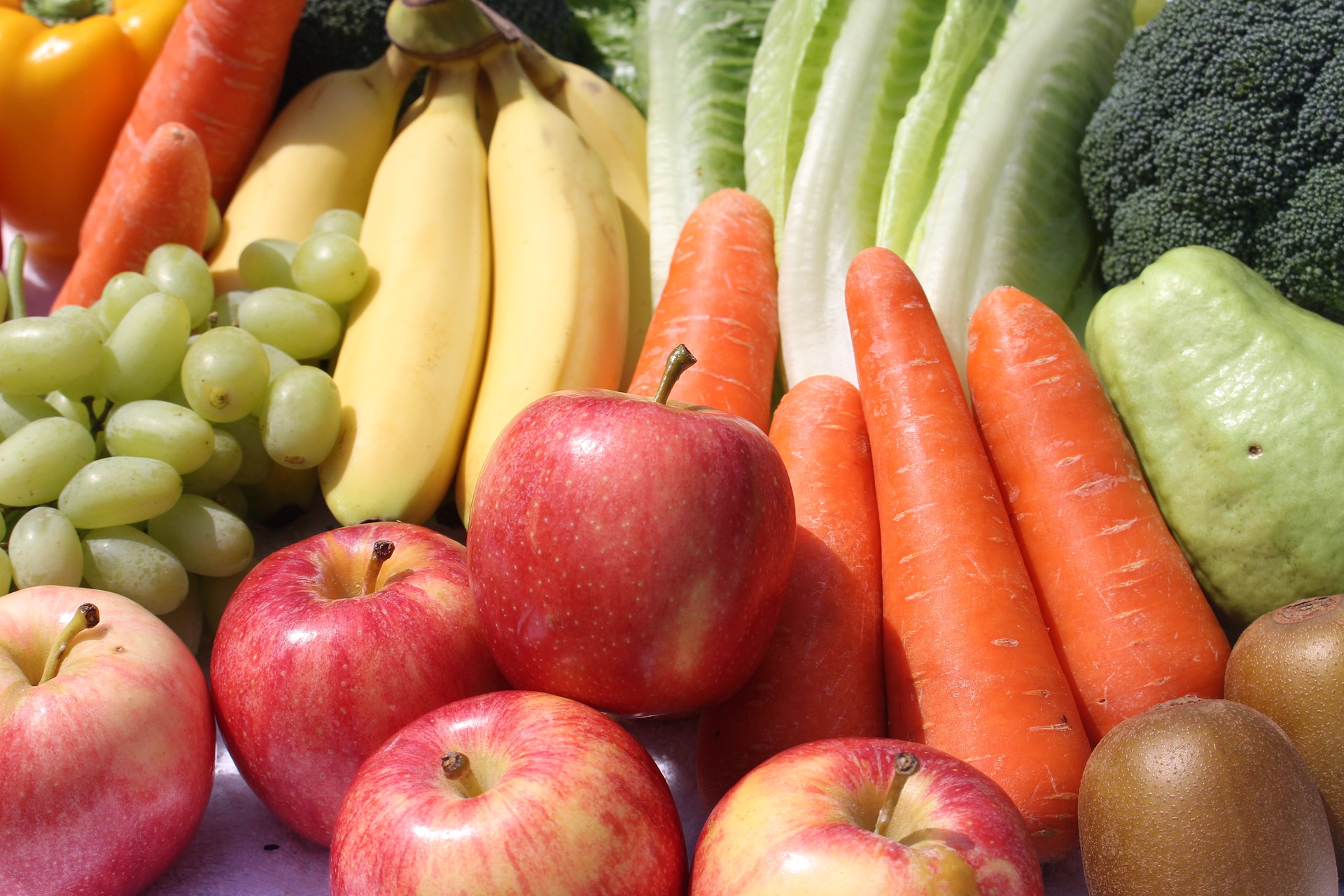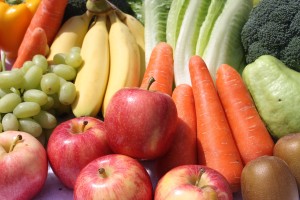
SICKLE CELL AND HEALTHY FOOD THAT LIFT YOUR MOOD
As you know if you suffer from SCD or you look after someone who suffers from it, one thing is that people who suffer from Sickle cell can be depressed and so, when I saw this article about food that will lift your mood, I was most definitely interested in reading about it and doing some research on it.
When you’re feeling down, it can be tempting to turn to food to lift your spirits. However, the sugary, high calorie treats that many people resort to have negative consequences of their own.
Recently, research on the relationship between nutrition and mental health has been emerging. Yet, it’s important to note that mood can be influenced by many factors, such as stress, environment, poor sleep, genetics, mood disorders, and nutritional deficiencies. Certain foods have been shown to improve overall brain health and certain types of mood disorders.
Here are 9 healthy foods that may boost your mood.
1. Fatty fish
Omega-3 fatty acids are a group of essential fats that you must obtain through your diet because your body can’t produce them on its own.
Fatty fish like salmon and albacore tuna are rich in two types of omega-3s — docosahexaenoic acid (DHA) and eicosapentaenoic acid (EPA) — that are linked to lower levels of depression.
Omega-3s contribute to the fluidity of your brain’s cell membrane and appear to play key roles in brain development and cell signaling.
While research is mixed, one review of clinical trials showed that in some studies, consuming omega-3’s in the form of fish oil lower depression scores.
Although there’s no standard dose, most experts agree that most adults should get at least 250–500 mg of combined EPA and DHA per day.
Given that a 3.5-ounce (100-gram) serving of salmon provides 2,260 mg of EPA and DHA, eating this fish a few times per week is a great way to get these fats into your diet.
2.Dark chocolate
Chocolate is rich in many mood-boosting compounds.
Its sugar may improve mood since it’s a quick source of fuel for your brain.
Furthermore, it may release a cascade of feel-good compounds, such as caffeine, theobromine, and N-acylethanolamine — a substance chemically similar to cannabinoids that has been linked to improved mood.
It’s high in health-promoting flavonoids, which have been shown to increase blood flow to your brain, reduce inflammation, and boost brain health, all of which may support mood regulation.
Finally, chocolate has a high hedonic rating, meaning that its pleasurable taste, texture, and smell may also promote good mood.
Milk chocolate contains added ingredients like sugar and fat, it’s best to opt for dark chocolate — which is higher in flavonoids and lower in added sugar. You should still stick to 1–2 small squares (of 70% or more cocoa solids) at a time since it’s a high calorie food.
3.Fermented foods
Fermented foods, which include millet, maize (ogi), locust beans (iru), cassava (gari), melon seeds (ogiri), yogurt, kefir, kombucha, sourdough and sauerkraut, may improve gut health and mood.
The fermentation process allows live bacteria to thrive in foods that are then able to convert sugars into alcohol and acids.
During this process, probiotics are created. These live microorganisms support the growth of healthy bacteria in your gut and may increase serotonin levels.
It’s important to note that not all fermented foods are significant sources of probiotics, such as in the case of beer, some breads, and wine, due to cooking and filtering.
Serotonin is a neurotransmitter that affects many facets of human behaviour, such as mood, stress response, appetite, and sexual drive. Up to 90% of your body’s serotonin is produced by your gut microbiome, or the collection of healthy bacteria in your gut.
In addition, the gut microbiome plays a role in brain health. Research is beginning to show a connection between healthy gut bacteria and lower rates of depression.
4.Bananas
Bananas may help turn a frown upside down.
They’re high in vitamin B6, which helps synthesize feel-good neurotransmitters like dopamine and serotonin.
Furthermore, one large banana (136 grams) provides 16 grams of sugar and 3.5 grams of fibre.
When paired with fibre, sugar is released slowly into your bloodstream, allowing for stable blood sugar levels and better mood control. Blood sugar levels that are too low may lead to irritability and mood swings.
Finally, this ubiquitous tropical fruit, especially when still showing green on the peel, is an excellent source of prebiotics, a type of fibre that helps feed healthy bacteria in your gut. A robust gut microbiome is associated with lower rates of mood disorders.
5.Oats
Oats are a whole grain that can keep you in good spirits all morning. You can enjoy them in many forms, such as overnight oats, oatmeal, muesli, and granola.
They’re an excellent source of fibre, providing 8 grams in a single raw cup (81 grams).
Fibre helps slow your digestion of carbs, allowing for a gradual release of sugar into the bloodstream to keep your energy levels stable.
In one study, those who ate 1.5–6 grams of fibre at breakfast reported better mood and energy levels. This was attributed to more stable blood sugar levels, which is important for controlling mood swings and irritability.
Although other sources of whole grains can have this effect, oats may be especially advantageous, as they’re also a great source of iron, with 1 raw cup (81 grams) boasting 19% of your daily needs.
Iron deficiency anemia, one of the most common nutrient deficiencies, is associated with low iron intake. Its symptoms include fatigue, sluggishness, and mood disorders.
Some research suggests that people experience improvements in these symptoms after eating iron-rich foods or supplementing with iron, but more research is needed.
6.Berries
Curiously, eating more fruits and vegetables is linked to lower rates of depression.
Although the mechanism isn’t clear, a diet rich in antioxidants may help manage inflammation associated with depression and other mood disorders.
Berries pack a wide range of antioxidants and phenolic compounds, which play a key role in combating oxidative stress — an imbalance of harmful compounds in your body.
They’re particularly high in anthocyanins, a pigment that gives certain berries their purple-blue colour. One study associated a diet rich in anthocyanins with a 39% lower risk of depression symptoms.
If you can’t find them fresh, try buying frozen berries — which are frozen at their peak ripeness to retain the maximum amount of antioxidants.
7.Nuts and seeds
Nuts and seeds are high in plant-based proteins, healthy fats, and fibre.
Additionally, they provide tryptophan, an amino acid responsible for producing mood-boosting serotonin. Almonds, cashews, peanuts, and walnuts, as well as pumpkin, sesame, and sunflower seeds, are excellent sources.
Moreover, nuts and seeds are a large component of both the MIND and Mediterranean diets, which may support a healthy brain. Each of these diets promotes fresh, whole foods and limits your intake of processed items.
What’s more, a 10-year study in 15,980 people linked moderate nut intake to a 23% lower risk of depression.
Finally, certain nuts and seeds, such as Brazil nuts, almonds, and pine nuts, are good sources of zinc and selenium. Deficiency in these minerals, which are important for brain function, is associated with higher rates of depression — although more research is needed.
8.Coffee
Coffee is the world’s most popular drink, and it may make the world a bit happier, too.
The caffeine in coffee prevents a naturally occurring compound called adenosine from attaching to brain receptors that promote tiredness, therefore increasing alertness and attention.
Moreover, it increases the release of mood-boosting neurotransmitters, such as dopamine and norepinephrine.
A study in 72 people found that both caffeinated and decaffeinated coffee significantly improved mood compared with a placebo beverage, suggesting that coffee contains other compounds that influence mood.
Researchers attributed this boost in attitude to various phenolic compounds, such as chlorogenic acid. Still, more research is needed.
9.Beans and lentils
In addition to being high in fiber and plant-based protein, beans and lentils are full of feel-good nutrients.
They’re an excellent source of B vitamins, which help improve mood by increasing levels of neurotransmitters like serotonin, dopamine, norepinephrine, and gamma aminobutyric acid (GABA), all of which are important for regulating mood.
Furthermore, B vitamins play a key role in nerve signaling, which allows proper communication between nerve cells. Low levels of these vitamins, especially B12 and folate, have been linked to mood disorders, such as depression.
Finally, they’re a good source of zinc, magnesium, selenium, and non-heme iron, which may likewise elevate your spirits.
The bottom line
When feeling blue, you may crave calorie-rich, high sugar foods like ice cream or cookies to try to lift your spirits.
While this might give you a sugar rush, it’s unlikely to help you in the long term — and may have negative consequences as well.
Instead, you should aim for wholesome foods that have been shown to not only boost your mood but also your overall health. Try out some of the foods above to kick-start your positivity routine.
Reference: https://www.healthline.com
My book: HOW TO LIVE WITH SICKLE CELL: SICKLE CELL and I (is now available on OkadaBooks and Amazon). Pls get your copy.







